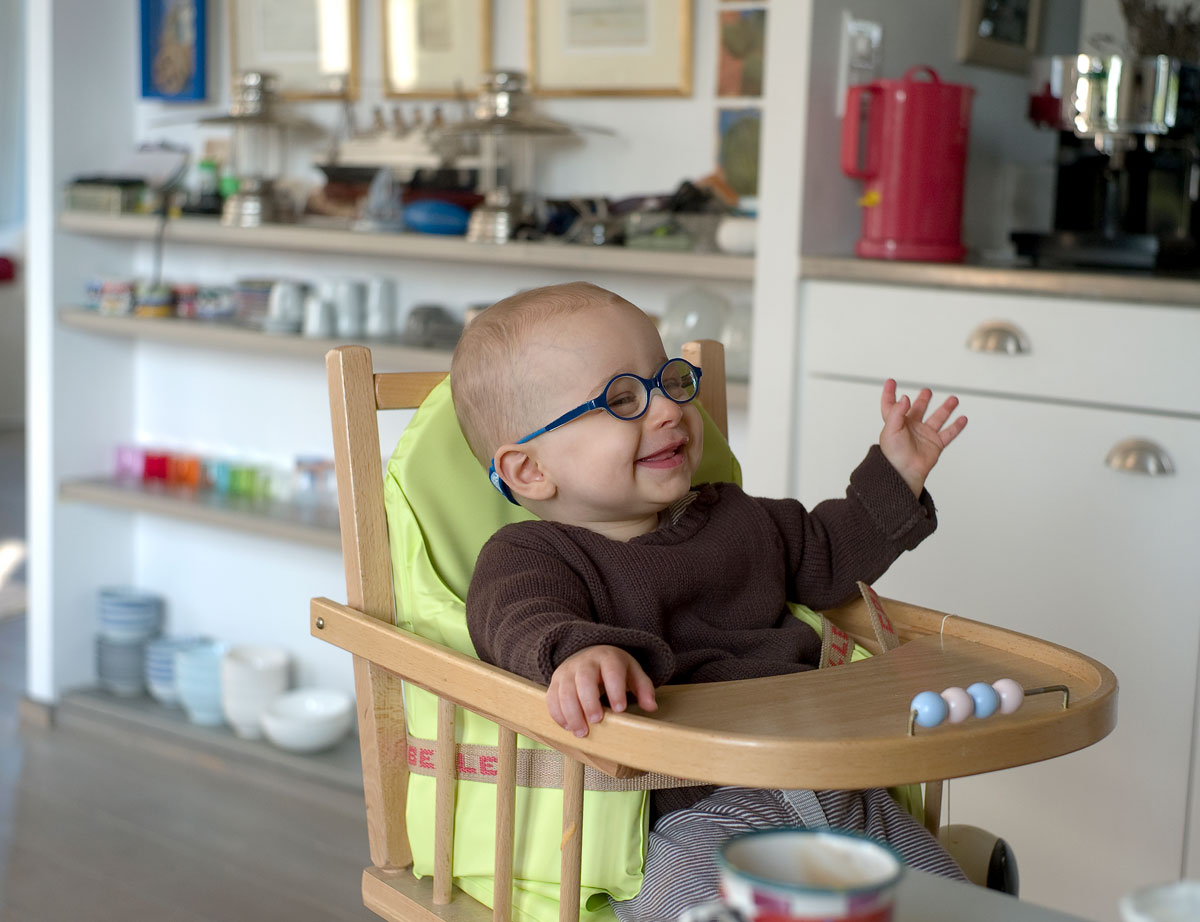 |
| Delaying giving glasses to infants may result in better visual outcomes, this study found. Photo: Getty Images. |
When infants are born with refractive error (RE), it usually decreases over time. This process, emmetropization, is thought to be affected by age and initial RE, with greater initial RE leading to faster rates of emmetropization. Currently, the American Academy of Ophthalmology bases its recommendations for glasses prescriptions on specific RE ranges at specific ages; however, researchers pointed out in a new study that these recommendations are based mainly on expert consensus and that application varies among prescribing doctors.
To help doctors make more informed decisions about prescribing glasses for infants, the researchers conducted a retrospective cohort study at the Children’s Hospital of Philadelphia. They aimed to better understand the proportion of children with high RE during infancy that emmetropize to a point where it would alter their clinical management.
The researchers studied 362 eyes of 194 infants (mean age at first exam: seven months, at second exam: 17.5 months; 168 hyperopic eyes of 92 children, 40 myopic eyes of 27 children, 201 astigmatic eyes of 114 children). A total of 49 eyes of 26 children received glasses prescriptions at their first exam. All children in the study underwent cycloplegic refraction at age six to eight months and again at 12 to 24 months. The children also had, during earlier periods, a RE in one or both eyes of hyperopia +3.5D or greater, myopia -2D or greater or astigmatism +1.5D or greater. The researchers wrote that the groups weren’t mutually exclusive. They didn’t include children with ocular disease that could affect RE or ocular growth.
Here are their findings on the degree of emmetropization in infants:
High astigmatism: 48% large improvement, 29% moderate improvement, 23% small improvement or worse.
Moderate astigmatism: 30%, 23%, 47%.
Moderate hyperopia: 27%, 25%, 48%.
High hyperopia: 19%, 24%, 57%.
Moderate and high myopia: 5%, 27%, 68%.
“We found that eyes with hyperopia or astigmatism emmetropized to a greater degree than eyes with myopia, and the greatest degree of emmetropization occurred among eyes with high astigmatism, followed by those with moderate astigmatism, moderate hyperopia and high hyperopia, in that order,” they explained in their paper. “Our observations stand in contrast with prior studies that showed no significant improvement in RE in hyperopic eyes of older children. Our results suggest a different pattern earlier in childhood.”
They say their results support “some but not all” of the AAO’s recommendations for prescribing glasses to infants under age one. “Prescribing glasses early for children with high myopia may be clinically appropriate as they are unlikely to emmetropize sufficiently by two years,” they wrote. “The decision to prescribe glasses early is less clear in infants with high hyperopia, as one quarter of children will no longer meet AAO guidelines when they are one year of age. Finally, almost two thirds of infants with astigmatism high enough to meet AAO guidelines emmetropize sufficiently to no longer meet guidelines for age one to less than two years. It appears appropriate to delay giving glasses and recheck RE later in these children.”
Schein Y, Yu Y, Ying G, et al. Emmetropization during early childhood. Ophthalmology. November 29, 2021. [Epub ahead of print]. |


